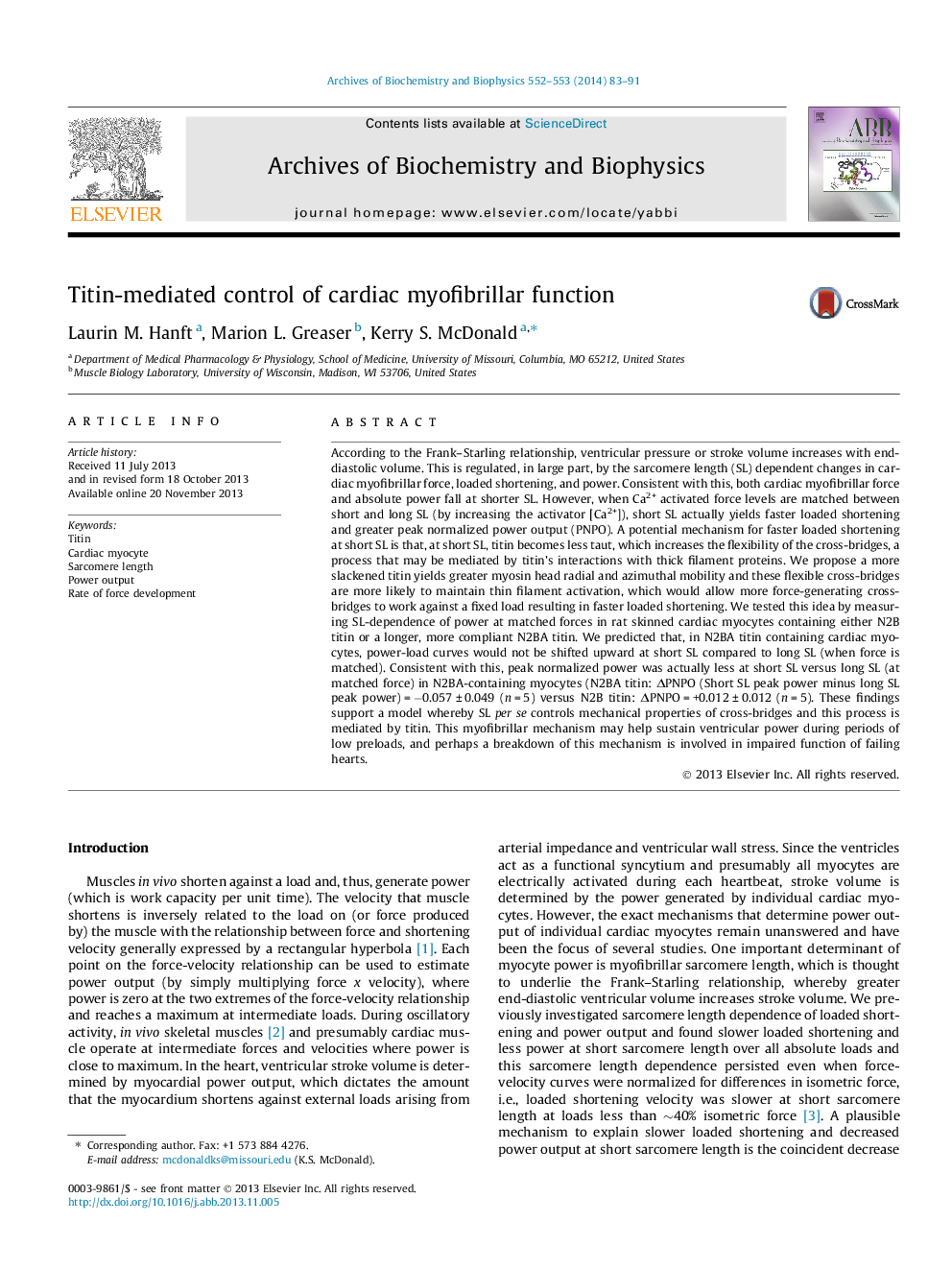| کد مقاله | کد نشریه | سال انتشار | مقاله انگلیسی | نسخه تمام متن |
|---|---|---|---|---|
| 1925186 | 1536348 | 2014 | 9 صفحه PDF | دانلود رایگان |
• We tested titin’s role on myocyte force development, loaded shortening, and power output.
• N2BA titin yielded faster rates of force development, faster loaded shortening, and greater power.
• We suggest that titin modulates both cross-bridge flexibility and thin filament activation.
According to the Frank–Starling relationship, ventricular pressure or stroke volume increases with end-diastolic volume. This is regulated, in large part, by the sarcomere length (SL) dependent changes in cardiac myofibrillar force, loaded shortening, and power. Consistent with this, both cardiac myofibrillar force and absolute power fall at shorter SL. However, when Ca2+ activated force levels are matched between short and long SL (by increasing the activator [Ca2+]), short SL actually yields faster loaded shortening and greater peak normalized power output (PNPO). A potential mechanism for faster loaded shortening at short SL is that, at short SL, titin becomes less taut, which increases the flexibility of the cross-bridges, a process that may be mediated by titin’s interactions with thick filament proteins. We propose a more slackened titin yields greater myosin head radial and azimuthal mobility and these flexible cross-bridges are more likely to maintain thin filament activation, which would allow more force-generating cross-bridges to work against a fixed load resulting in faster loaded shortening. We tested this idea by measuring SL-dependence of power at matched forces in rat skinned cardiac myocytes containing either N2B titin or a longer, more compliant N2BA titin. We predicted that, in N2BA titin containing cardiac myocytes, power-load curves would not be shifted upward at short SL compared to long SL (when force is matched). Consistent with this, peak normalized power was actually less at short SL versus long SL (at matched force) in N2BA-containing myocytes (N2BA titin: ΔPNPO (Short SL peak power minus long SL peak power) = −0.057 ± 0.049 (n = 5) versus N2B titin: ΔPNPO = +0.012 ± 0.012 (n = 5). These findings support a model whereby SL per se controls mechanical properties of cross-bridges and this process is mediated by titin. This myofibrillar mechanism may help sustain ventricular power during periods of low preloads, and perhaps a breakdown of this mechanism is involved in impaired function of failing hearts.
Journal: Archives of Biochemistry and Biophysics - Volumes 552–553, 15 June–1 July 2014, Pages 83–91
